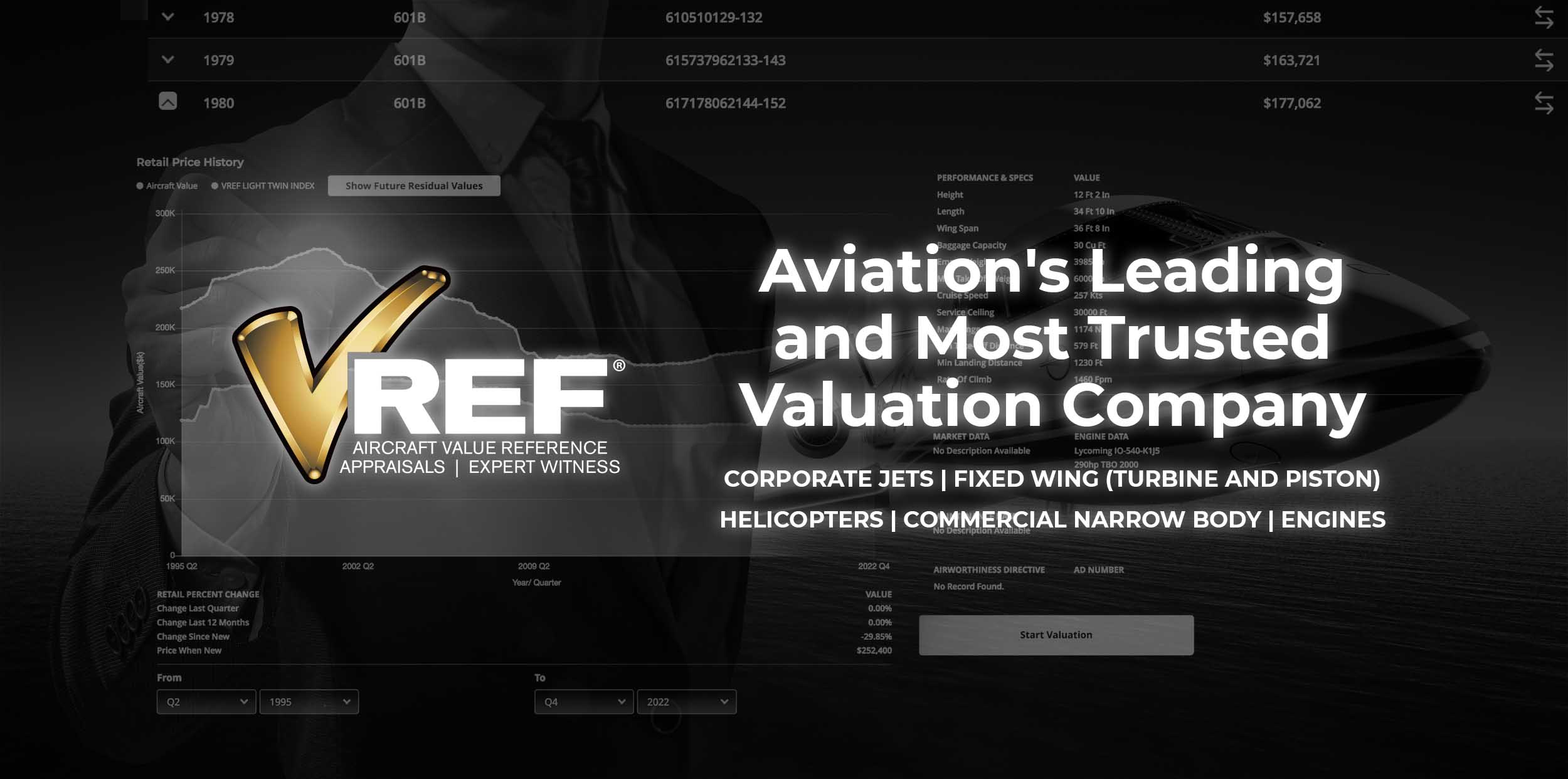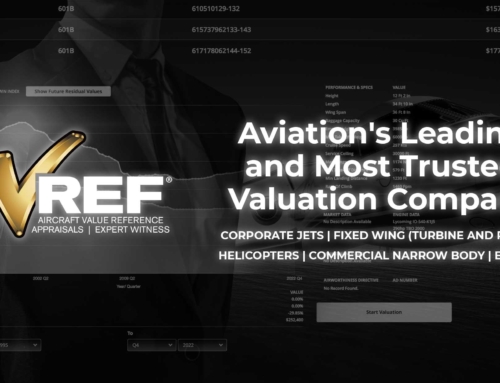Generally, aircraft haven’t changed much in their design over the years. What has become more apparent is the need for advanced safety features that utilize technology for the benefit of pilots, passengers, other travelers, and the citizens on the ground below.
Catch up with changes in general and single-engine aircraft safety features from across the world over 7 key areas:
- Emergency Autoland & Autothrottle Systems
- Electronic Stability and Protection (ESP)
- Enhanced Vision Systems (EVS)
- Flight Management System-Guided Visual Approach (FGV)
- Advanced Avionics Interfaces
- Predictive Maintenance Technologies
- Augmented Reality (AR) for Maintenance
Make informed decisions with accurate valuations.
1. Emergency Autoland & Autothrottle Systems
The PC-12 Pro incorporates Garmin’s emergency autoland system and the GFC 700 autopilot with automatic autothrottle engagement to improve safety and operational efficiency (Aviation International News).
The HondaJet Elite II – the first production of a twin-turbine Very Light Jet – received Federal Aviation Administration (FAA) certification for its autothrottle system. Autothrottle automates speed and thrust control to reduce pilot workload and enhance passenger comfort across various flight phases. This certification authorizes Honda Aircraft Company to enable autothrottle functionality on production aircraft (SkiesMag).
2. Electronic Stability & Protection (ESP)
Garmin’s GFC 600 is now approved for the Beechcraft Baron A55. The GFC 500 is certified for Robertson STOL-equipped Cessna 180 and 185 models. It is also designed for single-engine piston aircraft, and the GFC 600 targets high-performance piston and turbine aircraft (Garmin).
3. Enhanced Vision Systems (EVS)
Universal Avionics continues to lead the avionics market with its implementation of augmented reality (AR) and artificial intelligence (AI) technologies. Adding these advancements across their line of products significantly enhances a flight crew’s situational awareness and operational efficiency.
Due to LEDs’ lack of infrared radiation, Universal Avionics is addressing a critical industry challenge with its ClearVision™ EVS-5000 system – specifically designed to detect LED-based approach lighting systems that traditional EVS cannot capture. An update of this caliber better ensures that pilots maintain full visual capabilities during critical approach phases regardless of lighting technology.
4. Flight Management System (FMS) Guided Visual Approach (FGV)
Atlantic Jet has received FAA STC approval for its Aeronav upgrade for Citation aircraft, replacing the original FMS with two BendixKing AeroNav 900s with LPV approach capability. The upgrade also includes a new fuel flow computer that ensures true fuel flow function on the AeroNav 900s. Ultimately, the Aeronav upgrade will be used to improve navigation, efficiency, and safety with modernized systems and newer integrated technologies (Aviation International News).
5. Advanced Avionics
Pilatus Aircraft has officially launched its highly anticipated PC-12 Pro featuring a comprehensive Garmin avionics suite. This is exactly what the market has been waiting for as this upgraded platform integrates sophisticated FMS with improved situational awareness tools and precision navigation, improving overall performance.
As operational demands increase, this particular advancement can reduce pilot workload and streamline aircraft efficiency. The numbers don’t lie – this advanced cockpit technology makes the PC-12 Pro an increasingly compelling investment for discerning business and leisure aviation customers who demand maximum reliability in the single-engine turboprop market.
6. Predictive Maintenance Technologies
GE Aerospace is deploying an AI-driven inspection tool to optimize narrowbody engine time on the wing. This technology can enhance efficiency by identifying timely maintenance needs with precision to reduce downtime (GE Aerospace).
United Airlines is making significant advancements in predictive maintenance to safeguard fleet health through its CHIME platform (Condition and Health Indication, Monitoring and Engineering). Through advanced data analytics and predictive systems, the airline is working to anticipate maintenance issues before they occur and minimize operational disruptions across its fleet.
According to Mike Roemer, United Airlines’ Senior Manager of Digital Fleet Management, the company has already achieved the following since implementing predictive maintenance strategies:
- Avoidance of over 300 out-of-service events
- Prevention of over 1,000 delays and cancellations
- Significantly reduced emissions by 130,000 tonnes
Need precise answers for your aircraft value? Rely on our expertise for accurate aircraft assessments.
7. Augmented Reality (AR) For Maintenance
Simply enhancing maintenance with AR may not seem like much, but it can be when those systems have the potential to:
- Increase repair accuracy with real-time data and detailed visuals
- Speed up maintenance processes with step-by-step guidance
- Boost training efficiency through immersive, hands-on virtual experiences
- Minimize errors by leveraging real-time instructions during maintenance
How Companies Use Robotics & AI-Driven Inspections
You’ll see a lot more advancement and integration of robotics and AI in the inspection processes. Discover how the following companies are already integrating this technology.
Hexagon’s PRESTO system, for example, improves efficiency for manufacturers by allowing one person to set up, test, and use robots for quality checks in just a few hours.
Boeing uses an adapted version of 8tree’s dentCHECK as an initial inspection tool.
GE Aerospace in Cincinnati has deployed an AI-enabled tool to improve turbine blade inspections on narrowbody aircraft engines. This AI guides technicians to:
- Select images to review
- Increase inspection consistency
- Detect issues earlier
- Reduce inspection times by 50% to return engines to service faster
Make Informed Decisions With Aviation’s Leading & Most Trusted Valuation Company
With over 20,000 valuations a month, the VREF team knows how important it is to have precise data for your aircraft. Our ASA-Accredited Aircraft Appraisals provide the definitive insights needed so you can make confident buying and selling decisions for your aircraft.
Contact us to get started on your aircraft appraisal.
The information provided on this website does not, and is not intended to, constitute legal advice; instead, all information, content, and materials available on this site are for general informational purposes only.




